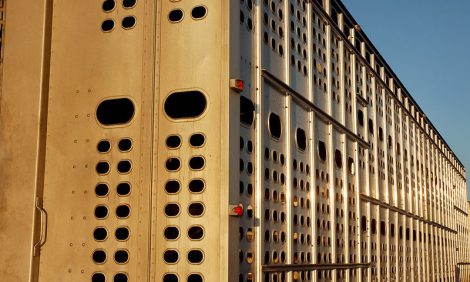



Russian Federation Livestock and Products Annual Report 2008
By USDA, Foreign Agricultural Service - This article provides the cattle industry data from the USDA FAS Livestock and Products Annual 2008 report for the Russian Federation. A link to the full report is also provided. The full report includes all the tabular data, which we have omitted from this article.Report Highlights:
Russia increased red meat imports 10.8 percent during the first half of 2008 and is expected to increase domestic pork production in coming years. Beef production is expected to decrease two percent in 2009. Imports of live pigs for slaughter increased 30 percent in the first quarter of 2008 as exporters sought to avoid import TRQ limitations. Pork production is expected to increase 7% in 2009, largely due to growing investment in swine production, better reproductive yields, greater availability of investment credit subsidies, and a high grain yield in 2008. Livestock policies under the State Program for Development of Agriculture and Regulation of Food and Agricultural Markets in 2008-2012 encourage swine production and attempt to address Russia’s declining cattle numbers. Russia and the United States agreed on several new veterinary certificates for live animals and livestock genetics. Russia is in the process of amending its veterinary, phytosanitary, and sanitary regulations.
Executive Summary
Russia’s red meat imports increased 10.8% during the first five months of 2008, up from 518,800 tons imported during the same period of 2007.1 Poultry imports increased 7.5% during the first five months of 2008, up from 426,900 tons imported during the same period of 2007. Unless Russian meat and poultry import regulations change, over-quota imports are projected to increase in 2008 and 2009. Imports of live pigs for slaughter increased 30% in the first quarter of 2008 as exporters sought to avoid import TRQ limitations. Supplies of live animals in Western Europe have been largely exhausted, and importers are turning to Australia, Canada, and now the U.S.
Potential investors in Russian cattle production are deterred by historically negative financial returns, and beef production is expected to decrease 2% in 2009. Pork production is expected to increase 7% in 2009, largely due to growing investment in swine production, better reproductive yields, greater availability of investment credit subsidies, and a high grain yield in 2008. Livestock policies under the State Program for Development of Agriculture and Regulation of Food and Agricultural Markets in 2008-2012 encourage swine production and attempt to address Russia’s declining cattle numbers.
In May 2008 Russia and the United States agreed on several new veterinary certificates for livestock genetics, including for live cattle and bovine embryos. Appropriate Russian agencies changed food safety regulation for food additives, organic food, poultry chlorine treatment, and others.
Production
The Federal State Statistics Service (Rosstat) reported that as of July 1, 2008, there were 17.4 million hogs, 1% fewer than in 2007. In 2007 the swine herd totaled 17.6 million hogs, a 9.9% increase from 2006. In Russia, private plots generated 49% of cattle, 43% of swine, and 50% of sheep and goats at the end of June 2008. Rising input prices significantly affect small Russian producers, because private households have a limited ability to pass on higher costs to consumers. Total profits in the Russian pork industry are falling, and competition is becoming fiercer. More-profitable, vertically integrated companies are increasing their market share as they absorb less-efficient producers.
Falling grain prices will drive herd growth-potential, allowing farmers to increase their pig herds. Swine production is expected to increase 7% to 44.4 million pigs in 2009. In 2008 swine production is expected to increase 7% over the previous year due to unexpectedly high reproductive yields and an anticipated record grain yield. Some meat market analysts predict that as new and modernized pig farming complexes reach planned capacity, pork production will grow 75% from 2008 to 2012. Under the National Priority Projects, the Russian government hopes to increase annual domestic pork production to 2.4 MMT by building multiple new pork production facilities. Domestic livestock production is currently cost prohibitive due to unreasonably high production costs, feed conversion ratios, and rising energy prices. This may change in 2008 as a record-setting grain yield results in lower feed prices. Lower input costs and higher meat prices may make pork production more costeffective.
In keeping with a long decline in the cattle sector, low productivity and reproductive inefficiency are expected to decrease cattle herds 3% in both 2008 and 2009. Beef production is forecast to fall 3% in 2008 and another 2% in 2009. While Russia has started to develop a commercial beef cattle industry, it will not play a significant role in beef production in the near future. Dairy cattle, including bull calves and spent dairy cows, remain the primary source of domestic beef. Making beef an attractive area for investment in Russia remains a challenge.
According to Rosstat, Russia boosted production of basic food items in 2008. Processed meat production increased 18% to 1.1 million tons from January to May 2008. Sausage production increased 8.6% to 965,000 tons, and canned meat increased 13.5% in the same period. Production of all processed meat and meat products increased 7.7% in the first half of 2008 over the same period of 2007. Meat and offal processing increased 14%, including a 0.5% increase in pork, a 4% decrease in beef, and a 21.4% increase in poultry. Production of semi-ready products increased 11%, and sausage production increased 4%.
Further Reading
| - | You can view the full report by clicking here. |
List of Articles in this series
To view our complete list of Livestock and Products Annual, and Semi-Annual reports, please click hereAugust 2008


